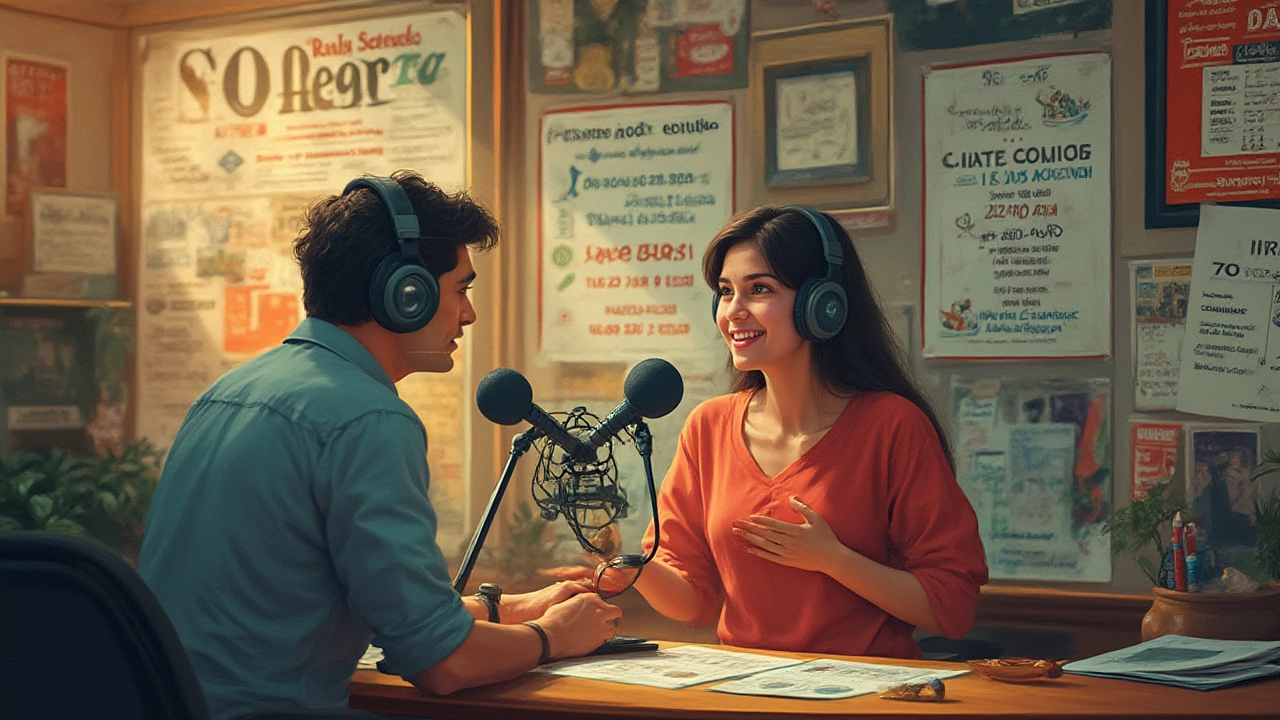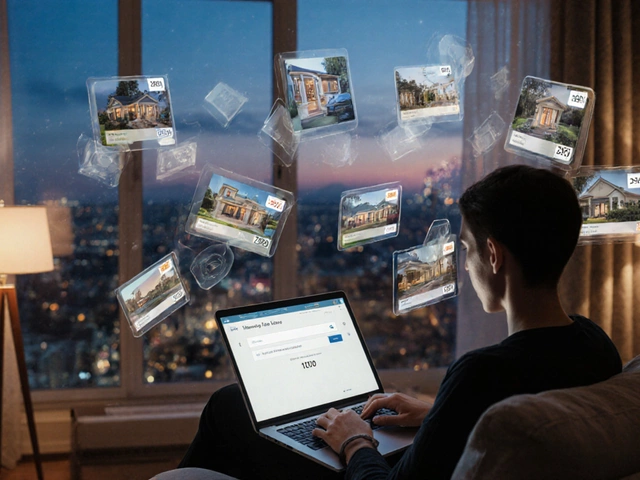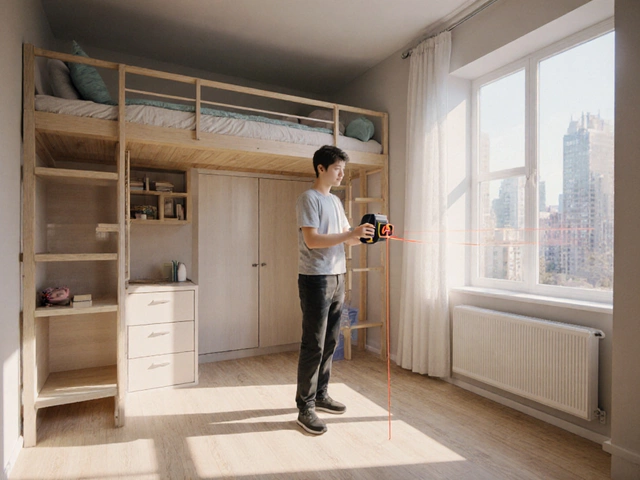Local Commercial Cost: Essential Guide to Pricing for Local TV and Radio Ads

Ever wondered why some businesses seem to have their logo everywhere? That local pizza spot with catchy jingles or the realtor whose face is always popping up between Saturday morning cartoons? It’s not magic, it’s paid placement—and not all that expensive, surprisingly. The real question is how much you need to throw down to get your business seen (and heard) in your own backyard. If you’ve been curious about launching your first local commercial, whether it’s TV or radio, you’re definitely not alone. A lot of folks assume it has to eat up the whole budget, but that’s not really the case. So, where do you start? And how do you make sure you’re not getting ripped off? Let’s unravel the cost puzzle together.
What Goes Into the Price Tag of a Local Commercial?
So, what makes up the price of a local commercial? Picture it like building a sandwich—there are layers, and each one can change the flavor (and the cost). First up is the production cost. This is where the magic happens: scripting, shooting, editing, voice overs, and sometimes actors or animation. Simple commercials, like a one-person camera shoot with basic editing, can start as low as $500–$2,500. If you want flashy graphics, special effects, or celebrity voices, you’re looking anywhere from $5,000 to $20,000. National Super Bowl ads? Definitely not the point here.
Location matters even more than you might think. In a huge media market like Los Angeles or New York, ad spots cost more. Smaller towns may land you a prime spot for a fraction of the price. On average, a 30-second local TV ad on a weekday evening news slot in a midsize city runs anywhere from $200–$1,500 per airing. Radio is sometimes cheaper: as little as $20 per spot on late-night hours or up to $200 during the morning drive. The more eyeballs (or ears) on the program slot, the steeper that bill climbs.
Timing makes a big difference. Prime time—the hours when the most people tune in—can double or triple your price tag compared to early afternoon or Sunday mornings. Want your ad to hit during the Super Bowl (locally)? Expect a huge price jump, even if it’s just regional airtime. There’s also the question of repetition—one-off ads don’t stick. Media reps always recommend running your commercial at least 5-10 times per week for a month. It sounds pricey, but costs per airing can dip when you buy bigger packages.
Another curveball: the cost of airing a commercial on cable vs. broadcast TV. Broadcast (think ABC, NBC, FOX, CBS) reaches everyone in town but is often pricier. Cable can be more surgical—you can pick specific networks or even ZIP codes to save cash. Pretty handy if your customer base lives in a certain neighborhood. Some cable packages for local businesses can drop under $10 per airing if you pick off-peak slots, but their reach is smaller.
Digital streaming? That’s booming and comes with new rate structures. You can run your spot on platforms like Hulu and Pluto TV to target local neighborhoods, with prices anywhere from $15 to $50 per 1,000 views—called CPM (cost per mille). Real estate offices and restaurants are loving these options because you can hyper-target by age, interests, and location.
Real Cost Examples: TV, Radio, and Digital Breakdown
Fact: Over 60% of US small businesses plan to buy a local TV spot by the end of 2025, according to the National Association of Broadcasters. They do it because it works—TV’s still hanging onto its credibility, and radio’s personal connection keeps people listening during morning commutes. But the price? Here’s a closer look, using numbers you can actually use when planning your budget.
Let’s say a family diner in Nashville wants to run a basic 30-second spot. Production (filming, editing, a local announcer) may run about $1,200. They want to air the commercial during morning and evening news on both weekdays and weekends for a month. The TV station offers a package: $500 per spot, four spots a week for four weeks (16 spots = $8,000). Their total bill lands just over $9,000, production included. It might sound steep at first, but that message is in front of tens of thousands of hungry locals during the perfect time slots.
Now, compare that to a local auto parts shop that chooses radio. Production’s even cheaper: $250 for a clear, personable voice—maybe even the shop owner—and a bit of sound editing. They pick the morning drive (when most DIYers and contractors tune in), $120 per spot, three times a week for a month (12 spots = $1,440). Total investment: $1,690 including production. According to Nielsen, radio reaches over 92% of Americans weekly—no small potatoes.
Streaming, meanwhile, is gaining steam. Local businesses can reach cord-cutters on Hulu or YouTube TV, paying by impression. If a bakery buys 25,000 local impressions at $30 CPM, their total spend comes to $750. Production costs for streaming are similar to TV, so add $1,500 for a snappy, visually appealing ad. For just over $2,200, their ad runs on streaming shows to locals with a sweet tooth.
| Platform | Production Cost | Air Time/Impressions | Typical Cost |
|---|---|---|---|
| Local TV | $1,000–$2,000 | Peak evening 30-sec spot | $200–$1,500 per airing |
| Radio | $100–$500 | Drive-time 30-sec spot | $50–$250 per airing |
| Streaming (Hulu/Pluto/YT) | $1,000–$2,000 | 25,000 impressions (CPM) | $15–$50 CPM |
Keep in mind: bundle deals can save you serious money. Sometimes broadcasters offer production discounts if you buy a lot of slots, so don’t forget to ask.

Pro Tips for Saving on Local Commercial Creations
Getting the most out of your local commercial cost isn’t just about picking the cheapest options. It’s about stretching those advertising dollars further so your message gets noticed and remembered. Here’s where that real-world wisdom comes in.
First, keep things tight and snappy. Attention spans are short. If you can deliver your message in 15 seconds, you’ll usually pay about 70% of the cost of a 30-second slot—and sometimes, shorter ads are more effective. That’s why you see car dealerships cramming in the deals at lightning speed.
Production doesn’t have to break the bank. Plenty of local colleges have students studying film or broadcasting who’ll create commercials for a reasonable fee—or even as a portfolio builder. Check out local Facebook business groups for freelance videographers too. Just make sure they know how to meet station specs, or you’ll be re-editing.
- Ask about off-peak discounts. The "graveyard shift" (late nights and early mornings) usually costs way less—perfect for targeting parents, night-shift workers, or students.
- Try co-op advertising. National brands, from car supply lines to pizza dough makers, sometimes foot part of your bill if you feature their product. Restaurants and real estate brokers use this all the time.
- Don’t overlook digital add-ons. Bundle your local TV package with social ads on the station’s website or streaming platform—they offer combo deals, and even $100 extra can double your exposure.
- Reuse footage—pay more upfront for a flexible commercial edit that you can modify for different seasons or sales. Smart businesses run the same basic spot for years with just a voiceover change.
- Always track results. Simple promo codes or landing pages help you see what’s working so you aren’t flushing money down the drain.
For context, some businesses split their advertising budget across TV, radio, and digital for more impact. According to Borrell Associates, local businesses in the US poured $27 billion into local TV and radio spots in 2024, with streaming ad spend growing by 26%. Blending platforms widens your net without ballooning costs.
Choosing Where to Spend: Matching Your Budget to Your Goals
So, you’ve got a rough advertising budget. Where’s it best spent? Should you put it all into TV, divide between media, or lean into digital? There isn’t a one-size-fits-all answer, but there are a few questions you need to be real about.
- Who are you trying to reach—retirees, parents, young adults, commuters?
- What are your business hours and when do customers usually shop?
- Are you in a rural market or a bustling city?
- How much can you really afford to lose on test runs?
If your dream customer is older and a die-hard TV viewer, local news slots in the early evening or weekend mornings are smart bets. Want to catch high schoolers or new college grads? Streaming ads with strong visuals will do the trick, often for less per impression. If it’s commuters you want, drive-time radio is still king.
Set a clear, tight budget before you sit down with stations or marketing reps. Expect a starting point of $2,000 for a solid radio or streaming campaign or $10,000 for a TV blitz (including production and all spot buys for a month). No need to go all-in—lots of small shops dip their toes with just a few hundred bucks on off-peak slots to test the waters.
- Negotiate the price, always. Local media wants your business and often has last-minute deals for unsold time slots. If the rate card says $300, don’t be shy to offer $200 and see what happens.
- Ask for proof of performance—detailed reports on when your ad ran and how many impressions you got. Honest stations share these without hesitation.
- Don’t chase "vanity" spots unless they're actually valuable—ads during local sports finals might cost more than they return for a bakery, but they’re gold for a sports bar.
There’s no rule locking you into just TV or radio. Many successful campaigns run a short, punchy streaming ad with follow-ups on radio and social media, all branded the same way. Consistency—same logo, same tagline, same feel—makes your spot stickier and your dollars go further.
Here’s the kicker: local commercials actually work best when they’re personal. If you sound like a human and not a slick, corporate robot, your *local commercial cost* is way more likely to bring folks through the door. That’s the key—get the right message in front of the right people, within a budget that leaves you room to invest in the next big thing for your business.









Write a comment